A Budget Home Theater & PC Setup: 4K, HDR, UHD Blu-ray, and More
by Ganesh T S on December 26, 2017 8:30 AM ESTLocal Media Playback
Our typical HTPC testing flow involves playing back files encompassing a range of relevant codecs, containers, resolutions, and frame rates. A note of the efficiency is also made by tracking GPU usage and power consumption of the system at the wall. Over the last year or two, the focus has been on using Kodi and MPC-HC with its built-in LAV filters for benchmarking. Even though we have had non-HDR 4K clips for some time now in our test suite, we have not subject them playback at native resolution. In order to augment our test suite, we have added two files, a 4Kp25 HEVC HDR stream in a MKV container, and a 4Kp60 VP9 Profile 2 HDR stream in a WebM container.
Out of all the options we evaluated, the TCL 55P607's in-built Roku platform is the only one capable of handling Dolby Vision videos. However, when we tried to play back a sample file, the Roku interface stalled in the retrieving stage after the appearance of the Dolby Vision logo.
The TCL 55P607 Roku Media Player App - Unable to Handle Local Dolby Vision Files
Due to the absence of reliable open-source editing and decoding tools for Dolby Vision in the PC space, its testing with local media files will have to wait.
The Roku Media Player app continues to be a disappointment for users with anything other than the standard H.264 / HEVC-based camcorder files. The following recorded clip shows its failure with some interlaced MPEG-2 and H.264 clips in TS containers. VC-1 is also not supported.
On the plus side, we have automatic switching to HDR for local files which have HEVC HDR content. On the othr hand, a VP9 Profile 2 HDR clip did not generate the mode switch.
We tracked the power consumption of the TV while the Roku interface tried playing back the various files in our test suite. It was not much of a surprise to find that Roku fails to play back many of the streams. The graph segments below corresponding to the files that didn't play back are just the display remaining idle in the Roku USB Player interface.
The NVIDIA SATV supports all files in our test suite except the one encoded in VP9 Profile 2. With Kodi, we even see the HEVC HDR file being decoded and sent to the display with the appropriate mode switch.
The NVIDIA SHIELD Android TV Supports HDR Playback with Local Files
The power consumption of the SATV was tracked during the playback of each file in our test suite using Kodi 17.6. The segment corresponding to the VP9 Profile 2 file is just the duration for which the audio track was decoded and the Kodi UI remained idle.
Moving on to the PC space, we first compare the DXVAChecker outputs for the three systems. The Zotac EN1080K with its GTX 1080 GPU does not support hardware decoding of VP9 Profile 2 videos. Even if a HDR stream were to be available, the system plays back only the non-HDR versions with the desktop in HDR mode.
The Absence of VP9 10-bit Profile 2 Decoding in the GTX 1080 is the Only Odd Spot (from L to R: ASRock Beebox-S 7200U, Zotac ZBOX MAGNUS EN1080K, and the Intel NUC7i7BNHX1)
We found the native Microsoft Movies & TV app to be capable of playing back HDR videos with the desktop in HDR mode. A comparison of playback using two different players in that mode is shown below.
However, the playback of HDR files in non-HDR mode using the Microsoft Movies & TV App results in messed up colors. As such, we don't recommend the Movies & TV app for HDR file playback under all circumstances.
It is possible to use the madVR renderer in conjunction with a suitable player to shift the display to HDR mode independent of the OS setting. It is also supposed to bring the display back to the original state when exiting. We tested it out with MPC-HC and madVR v0.92.10 on the Zotac EN1080K. On the KBL-U systems, using madVR as the renderer resulted in evident dropped frames irrespective of the setting. On the Zotac EN1080K, we found that the latest NVIDIA driver release (which we absolutely had to use for Netflix 4K playback) seemed to have some issues with the restoration of the previous mode. With certain settings, the colors seemed to get crushed significantly after madVR triggered the mode change.
In fact, the only reliable combination in which we could get playback of the files in the appropriate mode was to set the OS toggle for HDR, and allow madVR to pass through the HDR metadata directly to the display (something that the madVR author specifically mentions as unsuitable for purists). We do not have automatic mode switching or even identification of HDR when using Kodi (as of v17.6). With madVR and MPC-HC, it is possible, but the consumer experience may vary.
In our opinion, HDR local media playback is yet to reach a stable state with commonly used software combinations. CyberLink's PowerDVD 17 also supports automatic HDR mode switch for playback of local files on Intel GPU-based systems. We found that it worked well in both of the KBL-U PCs, but, PowerDVD unfortunately refused to play back the VP9 Profile 2 files on those systems.
The power consumption of the three PCs during the playback of each file in our test suite using Kodi 17.6 was recorded. The same was done using the Microsoft Movies & TV app also, but, we found significant power consumption change (up to 10W at the wall) when the control overlay appeared on the screen. As such, we believe that the Microsoft Movies & TV app is not a reliable way to determine media processing efficiency of any system.
A similar graph for the madVR playback case in the Zotac ZBOX EN1080K (with OS HDR toggle set and madVR configured for HDR passthrough in full screen windowed mode) is presented below.
The power consumption numbers were also graphed for the PowerDVD playback case using the two KBL-U systems.
In general, we find that the Zotac system consumes a lot of power, but, it also performs a lot better compared to the KBL-U systems when advanced HTPC requirements like madVR rendering are considered. The HDR ecosystem is just getting started and we are waiting for things to reach a more matured state before doing a detailed analysis of the playback of local HDR files in PCs.


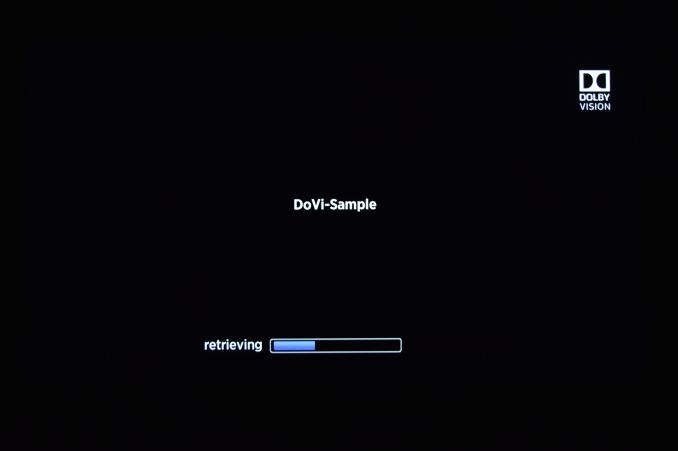

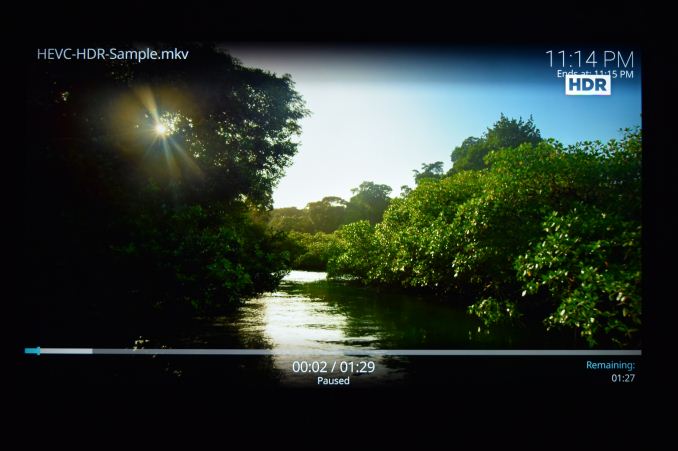
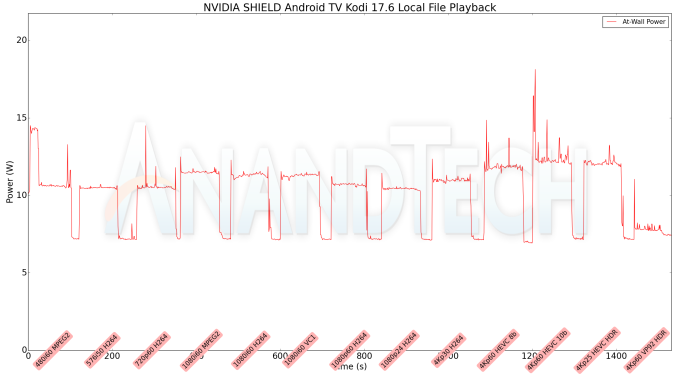
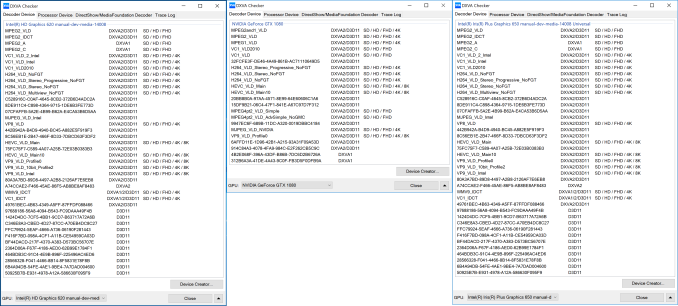
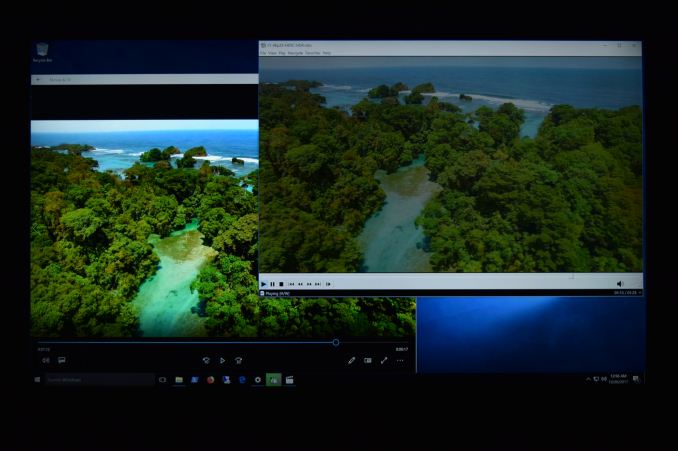
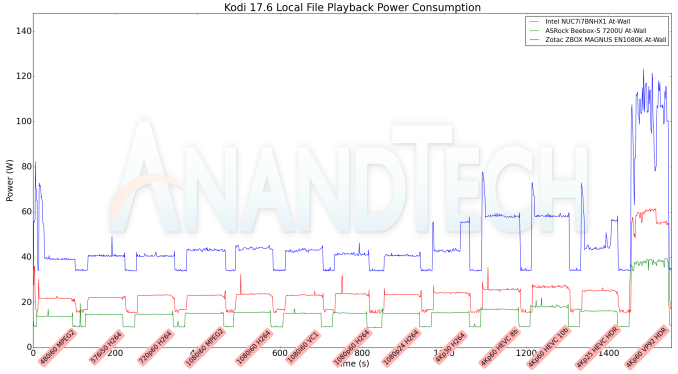










191 Comments
View All Comments
Alreyouano - Monday, January 1, 2018 - link
Sir, good day, im new in the home theater field. May i know what kind of speakers and how many do i need to buy to set up a 7.1.2 home theater at home. Thank you.Reflex - Monday, January 1, 2018 - link
Well to start the number you listed there actually tells you the total. 7.1.2 = 7 surround speakers (two front left/right, one center, one on each side, two behind), 1 subwoofer and 2 upwards firing drivers or ceiling mounted speakers for the space above the viewer.As to brands and so on you need to make certain your receiver or soundbar supports Dolby Atmos, I suggest avsforums.com for more info and user preferences.
Golgatha777 - Monday, January 1, 2018 - link
That would be 10 speakers if you include the subwoofer.5 up front (R,L,C, RP, LP), 4 in the back (RS, LS, RSB, LSB), and the subwoofer.
Reflex - Tuesday, January 2, 2018 - link
I think that's what I said? You included the RS/LS as 'back' and I listed them separately as "one on each side" in my description. One question I would have for you though: The upwards firing ones, if you only have 2 of them should they be front or back?I'm using a Samsung HW-K950 so it has four upwards firing drivers, but in a 7.1.2 you'd only have 2 presumably unless you drop the sides...
Alreyouano - Tuesday, January 2, 2018 - link
Thank you.kallek - Friday, January 5, 2018 - link
My biggest problem with HTCP's is the stutter from playing 23.976 clips. Using Reclock helps but it only works with some programs and I haven't got it to work well with DTS HD Master Audio and Dolby True HDVorl - Monday, January 15, 2018 - link
So, I haven't read all 18 pages of comments, so if this has been mentioned already, sorry.Why a 4k tv? They are a gimmick. If you sit more than a couple feet from your 55' TV, you can't see the difference. Here is a good link to explain it. https://referencehometheater.com/2013/commentary/4...
Sure, you can see the difference if you were gaming, and sitting NEXT to your monitor, but most people sit several to many feet from their TV, so even a big tv at 4k isn't something you can see. A lot of extra cost for no real gain.
mikato - Thursday, January 18, 2018 - link
Fun time reading the comments :) I’d just like to say that I came here and read it for the HTPC info. I would like to make a (better) HTPC but I won’t be upgrading my old home theater setup, so I wasn’t looking for stuff about receivers, TVs, etc. Doesn’t matter to me, but just figured I’d throw in my perspective. If I bought a new house or something, then I might be interested in that stuff. But as it is, I’ll be using what I have now for those items which work pretty darn well.iescheck2 - Wednesday, January 24, 2018 - link
It is not clear to me if the ASRock Beebox-S 7200U or Intel NUC7i7BNHX can stream Dolby True HD and DTS-HD MA through the HDMI to the AV receiver. Comparing those setups to a i5 notebook, what would be the advantages and disadvantages of each, since they may be similar in price?prateekprakash - Saturday, July 21, 2018 - link
Greetings @ganeshts .It would be great if you did a follow-up article, now that HDR & wcg mode works much better on windows 10.
I have a query: does the HDMI out of the pc go into the AVR, and the 4k60p out of the AVR goes to the TV?
I am asking this because I have my Sony x800d TV connected to my GTX 1060 HDMI out, and the windows sound icon shows only stereo and 5.1 as available options (the 7.1 option is greyed out).
Does that mean GTX 1060 HDMI out is limited to 6 channels only? Or is it somehow related to my msi b250 Mobo?
If I routed
GPU HDMI out>>AVR source in>>AVR>>AVR HDMI out>>TV
Would it then show 7.1 option?
I am new to home theatre space, and I intend to set-up my first home theatre, so I thought it would be wise to learn about it.